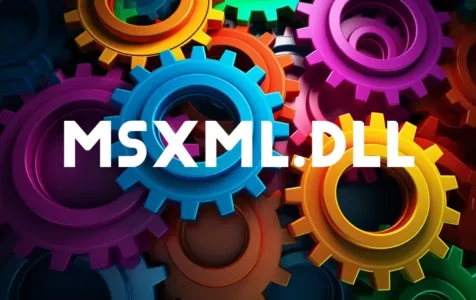Introduction to the MSXML DLL Files
The heartbeat of many Microsoft applications relies on the support of dynamic link libraries (DLLs), and among these, the MSXML DLL files play a crucial role. These files are associated with Microsoft XML Core Services, better known by its shorthand MSXML. They provide Windows-native capabilities for XML-based applications, which are foundational for a broad range of software operations, from web browsing to database management.
Functionality and Importance of MSXML DLL
The MSXML DLL files, including the likes of Msxml.dll, Msxml2.dll, and up to Msxml6.dll, form a core part of the MSXML parser. This parser is a COM (Component Object Model) implementation of the W3C DOM (Document Object Model), allowing software to read, manipulate, and modify XML documents efficiently.
A DLL file on its own does not run in the same way an executable (.exe) file does. Instead, it consists of code, data, and resources used by one or more applications for XML operations. Given its shared nature, it’s not uncommon for different software to leverage the same DLL for similar functionalities, making them a critical resource in Windows environments.
Is MSXML DLL Safe?
Provided they are legitimate files produced by Microsoft, MSXML DLL files are entirely safe. As with all programs and files, ensuring they are updated and patched is vital due to the security vulnerabilities that surface over time.
Expert Tip: For smoother PC performance, consider using a PC optimization tool. It handles junk files, incorrect settings, and harmful apps. Make sure it's right for your system, and always check the EULA and Privacy Policy.
Special offer. About Outbyte, uninstall instructions, EULA, Privacy Policy.
Risks, Viruses, and Malware Concerns
There are occasions where DLLs may pose risks if they become corrupted by viruses or malware. The original MSXML files should not cause any harm, but if a file is from an untrusted source, it might be a disguised threat. It always pays to have a reputable antivirus program in place and up-to-date to catch such anomalies.
Common Issues with MSXML DLL Files
Complications can occur with MSXML DLL files resulting from a few scenarios:
1. Faulty Applications: An application may improperly use the DLL or have bugs that affect it.
2. Deletion or Misplacement: Sometimes files get accidentally deleted or moved from their required location.
3. Corruption: Malware or software conflicts can corrupt DLL files, making them unusable.
4. Registry Errors: The Windows registry may have invalid entries pointing to the DLLs.
These issues can lead to error messages when attempting to run certain applications. Moreover, missing or corrupted DLL files might stop software from functioning properly or even starting at all.
Dealing with MSXML DLL Problems
Addressing common problems often involves a few steps:
– Restoring the DLL from the Recycle Bin if it was mistakenly deleted.
– Running a virus scan to remove any infections.
– Reinstalling the application associated with the DLL file.
– Downloading and installing the latest software updates or patches for outdated DLLs.
For MSXML, specific updates or patches can often resolve these issues. Given that Microsoft has discontinued support for earlier versions like MSXML 4.0, it’s important to ensure you are using an actively supported version. For example, current secure applications should be utilizing MSXML 3.0 or MSXML 6.0.
Troubleshooting DLL Errors
When facing DLL errors, a systematic approach is recommended:
1. Check the error message to identify which DLL file is causing the issue.
2. Ensure that the file in question is the correct version needed by the application.
3. Verify that the application looking for the DLL is updated.
4. Utilize System File Checker (sfc /scannow) to repair corrupted Windows files.
5. If a particular application requires the DLL, consider reinstalling that application.
6. Consult IT professionals if these steps do not resolve the problem.
If you are part of an IT department for a larger organization, decisions regarding DLL files should be made in coordination to prevent disrupting key applications.
In the context of discussions around MSXML, users have shared their experiences relating to application dependencies on specific versions of MSXML. In the case raised on community forums such as Spiceworks, the topic centered around the MSXML Parser 4.0 and vulnerabilities identified by scanners. Several users weighed in with their experiences, noting the necessity to coordinate with software vendors before deciding to delete or update DLL files, especially in cases where critical applications like accounting software may depend on a specific DLL version.
Sometimes, the DLLs needed for applications can be re-registered after a backup and deletion process, but steps like this pose risks and should be performed by knowledgeable IT personnel.
In all instances, the Microsoft Knowledge Base can be the go-to resource for downloadable packages or support files that may be required to fix MSXML-related issues. It is paramount that any downloads or updates come from official Microsoft sources or through IT-approved channels to ensure data and software integrity.
To wrap it up, one should never underestimate the role of MSXML DLL files in a smoothly running Windows ecosystem. They may work behind the scenes, unnoticed, until an issue arises, prompting swift actions to restore their function and, by extension, ensuring the stability of important XML-based applications used in daily operations.
